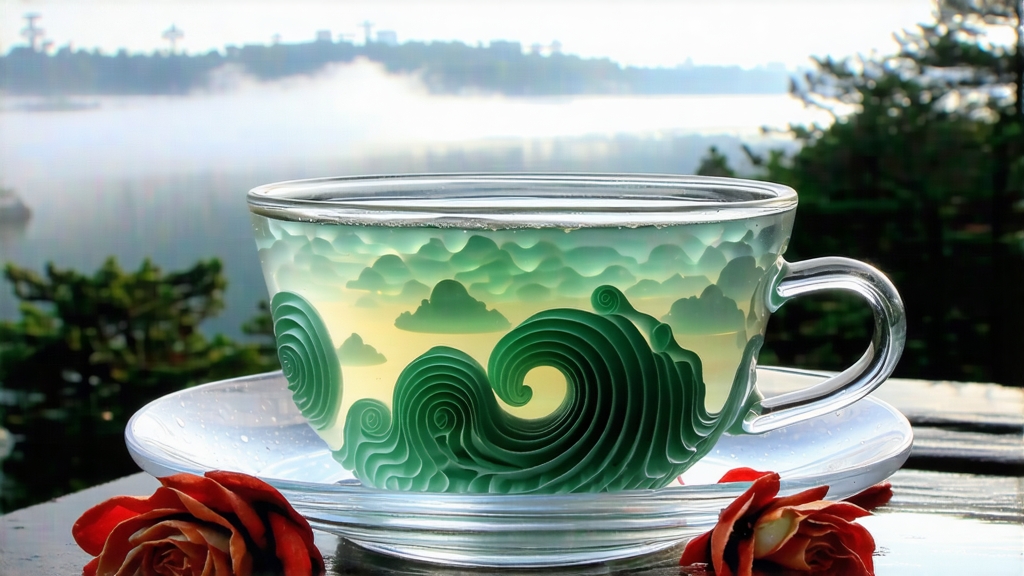
Among the jade jewels of Chinese green tea, none carries the romance of lake mist and imperial intrigue quite like Biluochun. Born in the Dongting mountains of Jiangsu that rise from the shores of Taihu Lake, this tea was first noticed by a nun in the seventeenth century who gathered wild leaves so fragrant that nearby tea makers followed her into the hills. By the Kangxi era the Qing court had placed it on the tribute list; the emperor, enchanted by the tiny spirals and their aroma of ripe apricot, renamed it “Green Snail Spring,” or Biluochun, because the leaves resembled tiny green snails and arrived with the first spring boats down the Grand Canal. Today the name still evokes the same image: minute, jade-colored coils that unfurl in hot water like sleeping dragons stretching after winter.
Strictly speaking, only leaf plucked within the narrow caldera of Dongting’s East and West mountains can claim the protected title “Original Biluochun.” Yet the style has traveled, and the market now recognizes three commercial grades: Supreme, picked before the Qingming festival when one bud weighs barely 0.05 g; First Grade, picked before Grain Rain, still only one bud and one unfolding leaf; and Fine Grade, picked in early May, where a bud is paired with two tender leaves. Beyond these, tea gardens in Sichuan, Guizhou and Zhejiang produce “spiral-style” green teas using the same rolling technique, but connoisseurs insist the Taihu microclimate—morning mist that refracts sunlight, quartz-rich soil, and night breezes scented of loquat and citrus blossoms—cannot be replicated.
The craft begins at dawn when the air is cool and the dew acts as a natural protective film. Pickers wear silk gloves to avoid bruising the downy tips, dropping them into shallow bamboo trays lined with gauze. Within four hours the leaves must reach the village workshop, where they are spread no thicker than two centimeters to wither for ninety minutes; this gentle loss of moisture concentrates the flowery volatiles that will later astonish the nose. Next comes the kill-green step, unique among Chinese greens for its double firing. A wok is heated to 180 °C, then cooled to 100 °C within seconds by splashing a ladle of lake water onto the iron. The tea master tosses 250 g of leaves with a rhythmic clap that sounds like rain on a tin roof; in three minutes the enzymes are deactivated yet the chlorophyll remains vivid. Without pausing he rolls the hot leaves along the wok’s curved wall, applying pressure in a counter-clockwise spiral—this is where the signature snail shape is born. A second firing at 70 °C for forty minutes reduces residual moisture to 5 %, locking in the chestnut-sweet fragrance. When finished, a kilogram of Biluochun contains more than sixty thousand tips, each no longer than a housefly’s wing.
To brew Biluochun properly one must respect its delicacy. Choose a tall glass or a porcelain gaiwan of 150 ml; metal will flatten the high notes. Water should be drawn from the same Taihu basin if possible, filtered but not distilled, and brought to 75 °C—any hotter will cook the downy hairs and release an astringent chlorophyll bite. First warm the vessel, then add three grams of tea, tilting the glass so the spirals cascade like a green waterfall. Pour the water along the wall, not directly onto the leaves, and within thirty seconds the tiny snails begin to unfurl, releasing a pale champagne liquor. The first infusion, lasting forty seconds, offers aromas of white peach and fresh pea tendrils; the second, at twenty-five seconds, layers in a faint marine salinity reminiscent of lake breeze. By the fifth infusion the leaves have surrendered most of their aromatics, yet a soft sweetness lingers, proof of the amino-acid richness that mountain shade and morning mist bestow.
Professional tasting follows a quiet choreography. Place five grams in a white porcelain cup, add 100 ml of 80 °C water, and cover for three minutes. Bring the cup to eye level and observe the liquor: the ideal hue is the green of young willow, neither olive nor chartreuse. Inhale with mouth slightly open to cool the vapor, identifying top notes (blossom), middle notes (chestnut), and base notes (sweet corn).